Step inside a newly built apartment complex in almost any American city and you’re likely to find people congregating in an unexpected place. They’re not in the pool or the game rooms or the gym. The people are gathering in the mailroom.
Through an unusual collision of building codes, postal regulations, shopping habits, and a global pandemic, mailrooms have become a new kind of social space in apartment buildings. And designers are finding new ways of taking what has long been a utilitarian peripheral space and turning it into a central square where residents can dwell and interact.
Julia Lauve is an interior designer in Dallas and her firm Workshop Studio designed the mailroom for a recently completed 213-unit apartment building in suburban Lewisville, Texas. Instead of presenting a simple row of metal mailboxes, the mailroom appears to be more of a lounge, with a large U-shaped sofa in the middle, dark paneled walls, soft lighting, and wide carpeted floor. There are tables where residents can sit and open their mail or pull out a laptop, and doors to the street turn it into a waiting room for visitors or rideshare services.
“It pulls you in with some soft seating and invites you to stay there for a little while instead of just opening your mailbox, getting your three or four pieces of junk mail, tossing them in the trash, and leaving,” Lauve says.
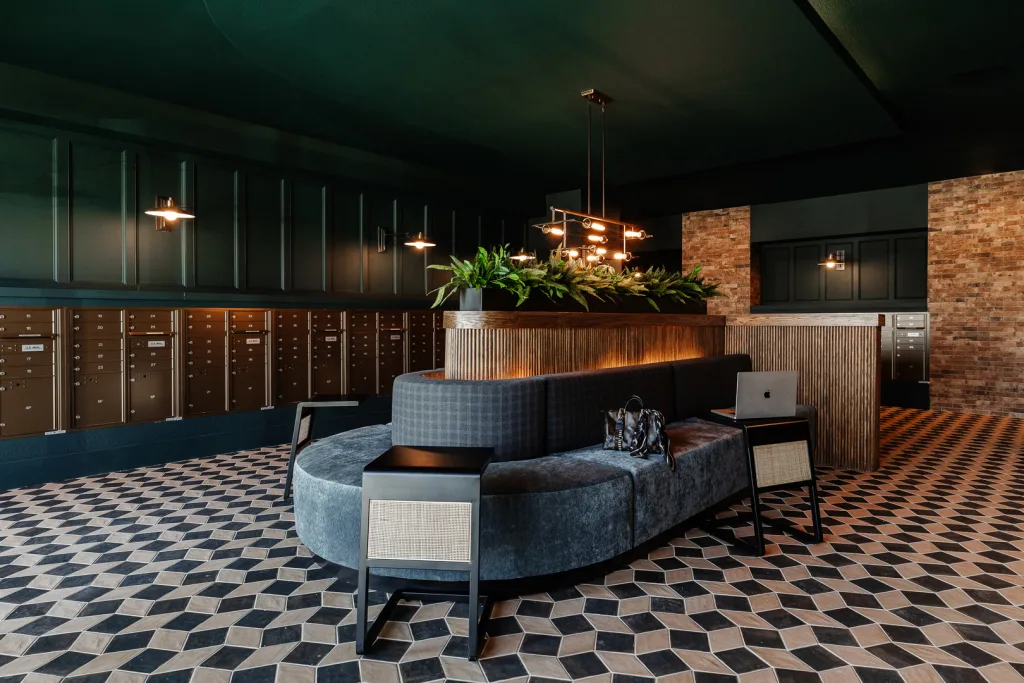
The mailroom is also front and center in the building, rather than hidden in some back room.
“It is an extension of the lobby and the community spaces within this property, instead of it being an afterthought and tucked away,” says Lauve. She’s created several other similar mailroom designs for apartment complexes in Texas, and there are residential projects from Arizona to Virginia where mailrooms are considered just as much of a resident amenity as a pool or a gym.
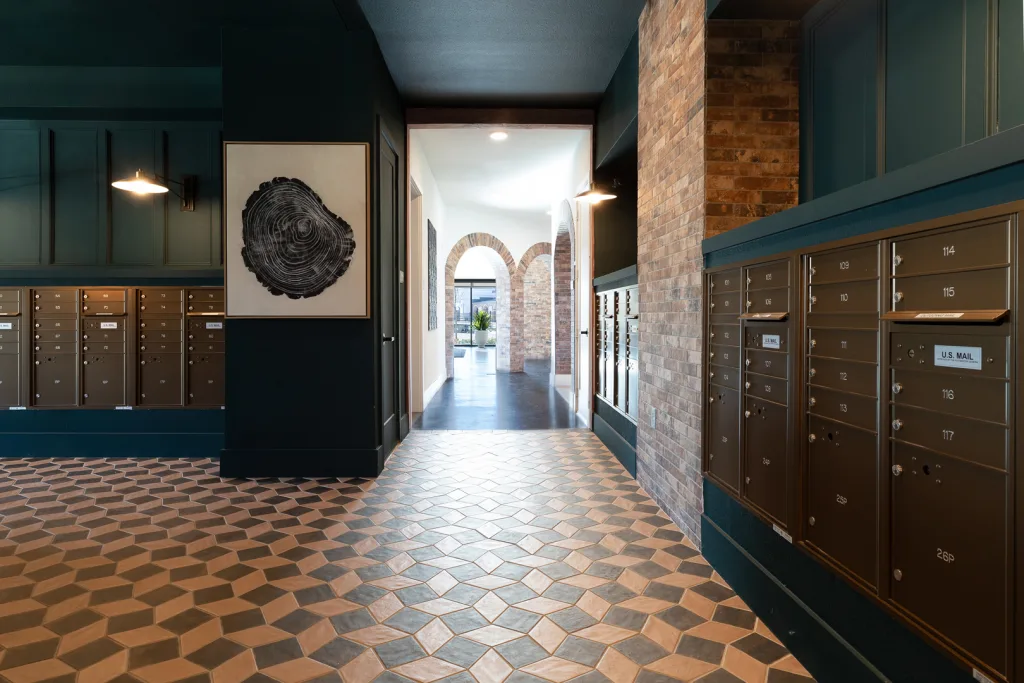
Why mailrooms are such a desired perk
The mailroom’s sudden rebirth may seem random, but it has come about through a perfect storm of outside influences.
“A lot of it is driven by code,” says Sheena Brittingham, managing partner of Vida Design, an interior design firm based in Portland that has multiple mailroom design projects in its portfolio. Recent revisions to the Americans with Disabilities Act (ADA) require large apartment buildings to have at least some mailboxes within a “reach range” between 15 and 48 inches from the ground, and many local jurisdictions require all mailboxes to fall within that range, adding more linear footage to the overall mailroom size.
Building codes that once required turning radii in hallways and common areas to be at least 60 inches have increased the minimum to 67 inches, adding additional space between rows of mailboxes. “[Mailrooms are] just getting larger and larger and taking up more space,” says Brittingham. “On most of our projects we’ve approached it like, let’s make this a beautiful experience and make it a place people actually want to come.”
That means putting more design touches into a real estate footprint that has swollen in size. Lauve’s project in Lewisville, Texas, for example, has about 8,700 square feet of amenity space on two floors, including a clubhouse, a gym, and a business center. Almost 1,000 square feet of that is dedicated to the mailroom. “It’s a lot of space,” she says.
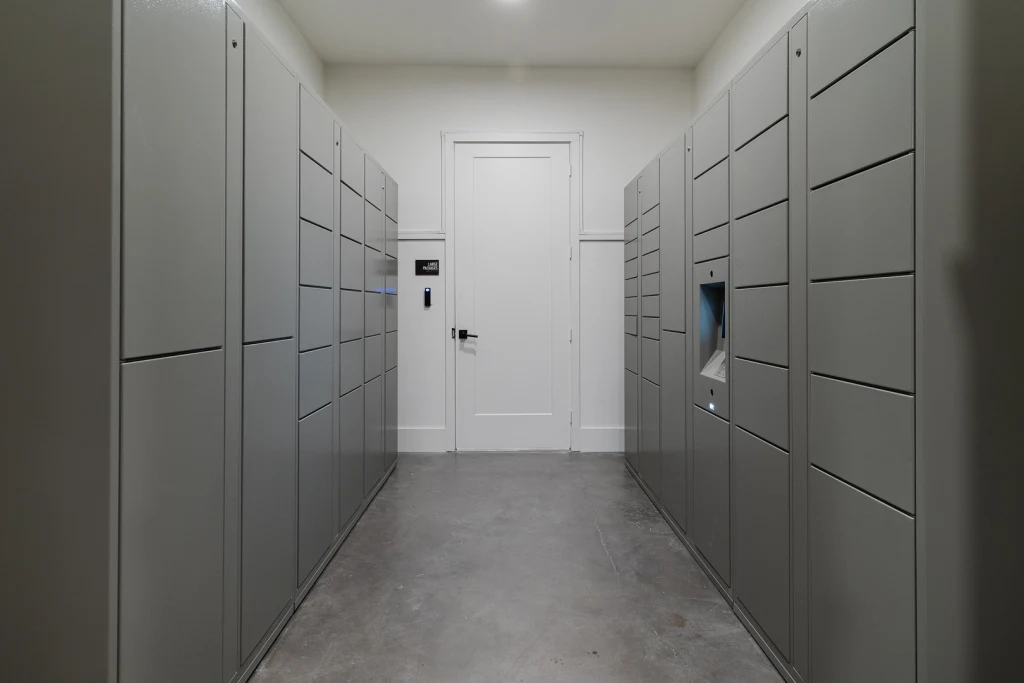
The main courier of mail—the United State Postal Service itself—has also influenced this trend. Mail receptacle standards revised in 2020 now require that multifamily residential buildings locate their mailrooms “reasonably close” to the nearest place where a mail carrier can park their delivery vehicle, which many local postmasters have interpreted as a 100-foot rule of thumb. That’s brought mailrooms out of the dark corners and much closer to the front of the building, blurring the edges between mail infrastructure and the lounge-like lobbies and sleekly designed common areas many of these developments include.
Brittingham says her firm used this new condition to influence its design concept for a mailroom in a recent project in San Diego, which sets aside some of the mailroom’s counterspace for a typewriter that nudges people to contribute to a public journal of sorts. “It’s trying to engage the residents a little bit more in an analog way,” she says. “Mail is such an analog experience that it’s kind of nostalgic.”
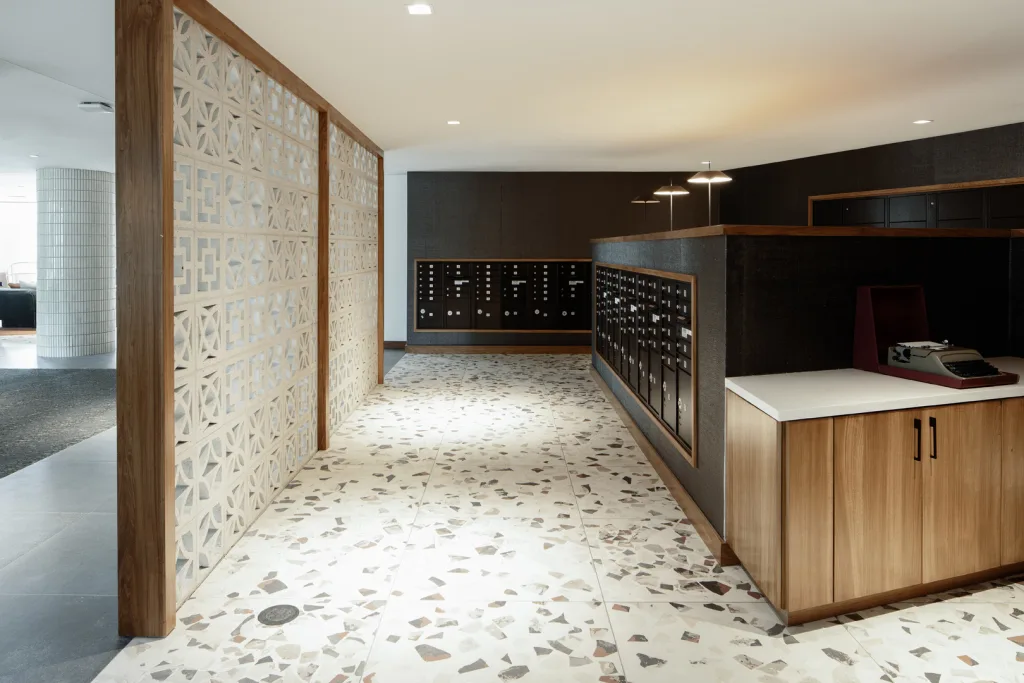
Redesigning mailrooms for the work-from-home era
With the rise of e-commerce, dedicating more space to mail has become a modern necessity. “Anything that you could possibly need can be delivered to your door,” says Lauve. “People are now receiving all of this stuff from mail services, delivery services. So it’s become this behemoth amount of space that a developer needs to consider to make everybody happy.”
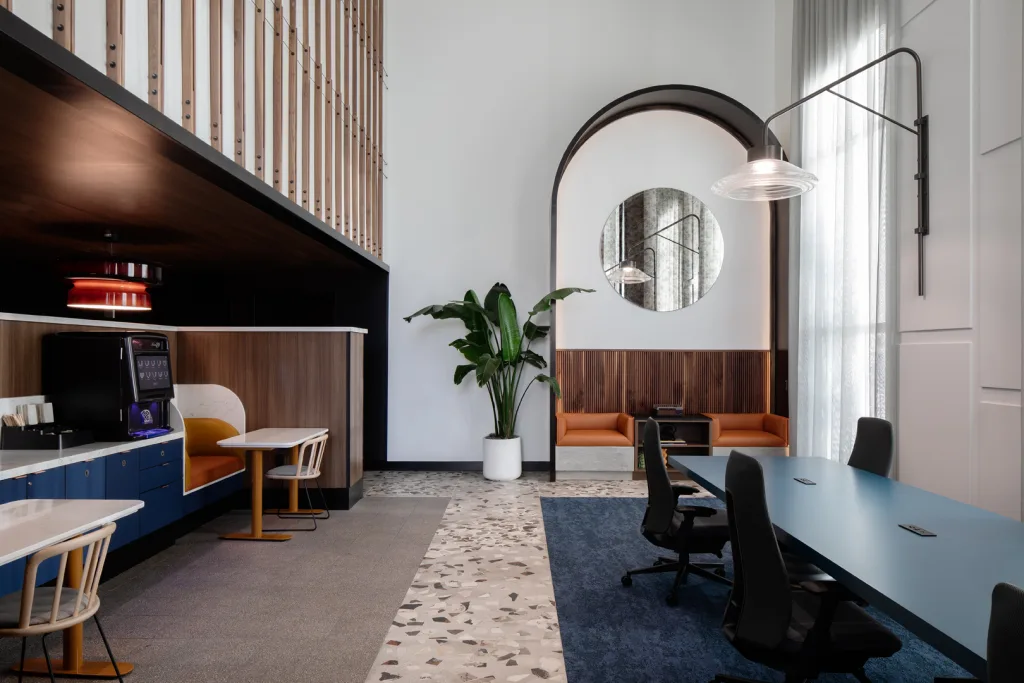
Parcel rooms and delivery lockers are now also part of the mailroom landscape, with an increasingly sophisticated array of hardware capable of handling the daily onslaught of deliveries too big to fit in a typical mailbox. Brittingham says some of her firm’s projects have invested in space and technology to make this process as smooth as possible for residents, including secure rooms with key-coded doors, video surveillance, and elegant lighting. “We want to really elevate that experience because everybody is going here almost every day to pick up their packages,” she says. “We don’t want it to feel like you’re going down some creepy corridor to get your stuff.”
Increased rates of package delivery is one side effect of the pandemic. Another is the growth of flexible work, which has turned many spaces—intentionally or not—into places where people can do their jobs.
“We’re seeing a lot of overlap in any amenity space for cowork,” says Brittingham. “Any space or any surface where you give people an outlet and Wi-Fi, it gets utilized.”
Her firm’s mailroom design projects have built this reality into its designs, adding extra seating and tables to allow for people to linger or even decamp from their usual workspace. In post-occupancy studies of projects, Brittingham says the shared spaces within mailrooms are used regularly. “We see a lot of people coming down during the day and just sitting on their laptop or being on their phone in a public space and just wanting to be together in any common area,” she says.
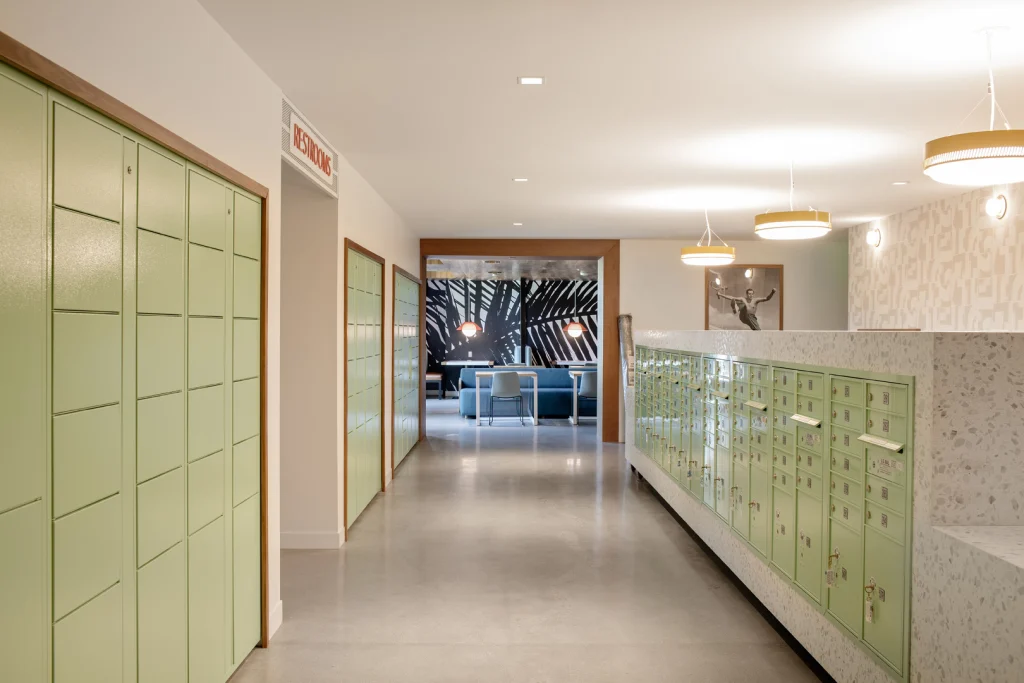
Building managers are also claiming these spaces for themselves. Brittingham says the loungelike atmosphere of the mailroom has become an informal area for a building’s leasing manager to meet with prospective tenants, closer to the ebb and flow of residential life, showing a glimpse of the social potential of living in a big apartment building.
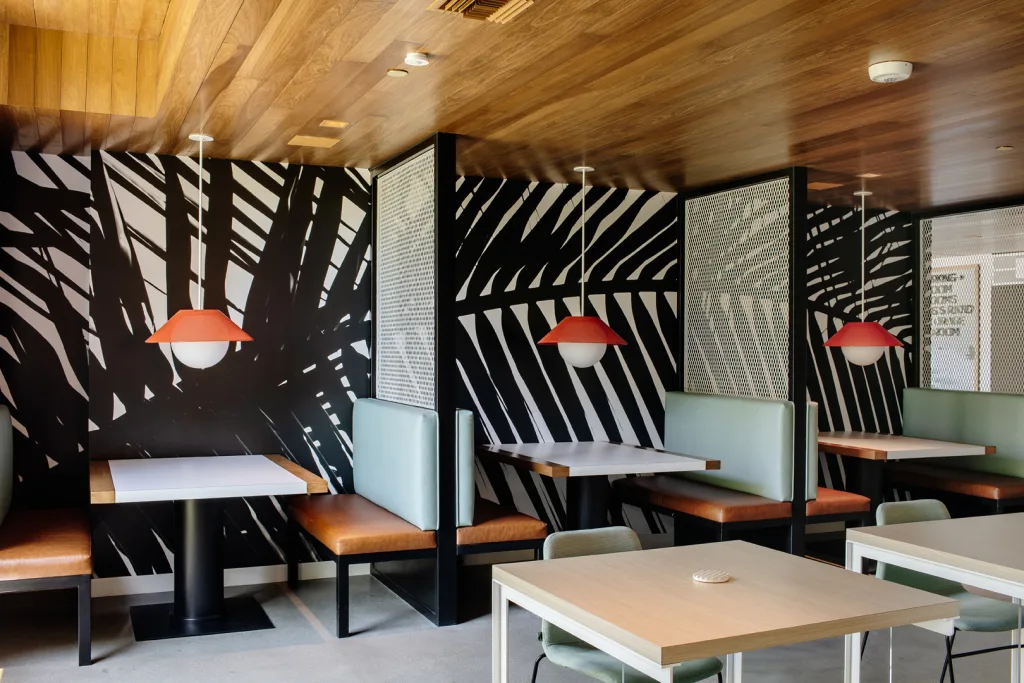
The reemergence of mailrooms is partly happenstance, but this space is becoming the heart of multifamily residential projects. It may be a more critical third place than the other conventional amenity spaces within these buildings.
“We’ve done arcade rooms. We’ve done golf simulators. We’ve done coffee shops that are attached as part of a multifamily property. So there is this chase for what is the most sought after amenity,” says Lauve. “What we have really found through our experience is it’s not the amenity, it’s community.”
